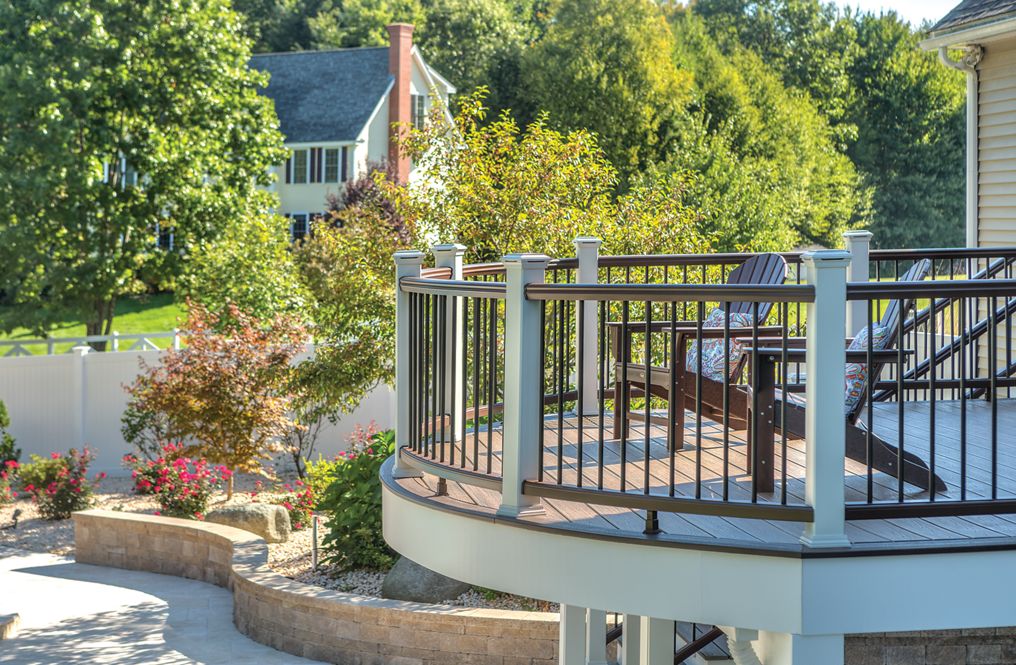
Decking has become an essential feature for many homeowners who wish to enhance their outdoor spaces. When it comes to choosing the right material for a deck, composite decking has emerged as a popular choice due to its durability, low maintenance, and environmentally friendly qualities. In this article, we’ll explore what composite decks are, their benefits, and why they have become a top choice for modern outdoor living.
What is Composite Decking?
Composite decking is a material made from a combination of wood fibers and plastic. This mixture creates a strong, durable product that mimics the appearance of natural wood but offers additional benefits that traditional wood decking cannot. The most common materials used in composite decking include recycled wood, sawdust, and plastic such as polyethylene, which helps in reducing waste and offering a more sustainable option than using natural wood alone.
Benefits of Composite Decks
1. Low Maintenance
One of the most significant advantages of composite decking is its low maintenance requirements. Unlike traditional wood decks, composite decks do not need to be sanded, stained, or sealed every few years. They are resistant to weathering, fading, and staining, which means they maintain their appearance and functionality without the need for frequent upkeep. A simple cleaning with soap and water is usually enough to keep a composite deck looking great.
2. Durability and Longevity
Composite decks are highly durable and can withstand the elements better than wood decks. They are resistant to warping, splintering, and cracking, which are common problems with traditional wood. Additionally, composite decks do not attract termites, making them less prone to damage from pests. With proper care, composite decking can last for 25 years or more, far outlasting wood alternatives.
3. Environmentally Friendly
Composite decking is often made from recycled materials such as wood scraps, plastic bottles, and other waste products. This makes it a more eco-friendly choice compared to wood decks, which require the harvesting of trees. By choosing composite, you’re contributing to sustainability by reducing deforestation and minimizing plastic waste.
4. Aesthetic Appeal
Composite decking is available in a wide range of colors, textures, and styles, allowing homeowners to create the exact look they want for their outdoor space. Whether you prefer a natural wood grain finish or a sleek, contemporary style, there’s a composite decking option to suit your taste. The color won’t fade over time, and it retains its aesthetic appeal, even with constant exposure to the elements.
5. Safety Features
Composite decking is designed to be slip-resistant, making it a safer option for families, particularly in wet conditions. Unlike wood, which can become slippery when wet, composite decks provide better traction, reducing the risk of slips and falls. Additionally, composite decks do not splinter, which is especially important for households with children or pets.
6. Resistant to Moisture and Mold
Moisture is a common issue that can damage wood decking over time. Composite decks are designed to resist moisture absorption, which helps prevent issues like mold, mildew, and rot. This moisture resistance is particularly beneficial for homes located in humid or rainy climates, where wood decks may struggle to maintain their integrity.
Why Choose Composite Decking?
Cost-Effectiveness in the Long Run
While the initial cost of composite decking may be higher than traditional wood, it’s important to consider the long-term value. The low maintenance requirements, durability, and long lifespan of composite decks can save homeowners significant money over time. There’s no need to replace rotting boards or spend on sealing and staining materials, making it a more cost-effective solution in the long run.
Versatility
Composite decking is incredibly versatile and can be used for a variety of applications beyond traditional decking. It is ideal for creating custom outdoor living spaces, including pool decks, patios, and even railing systems. The versatility of composite materials allows for unique designs and layouts that are both functional and visually appealing.
Conclusion
Composite decking offers a winning combination of durability, low maintenance, aesthetic appeal, and environmental benefits. Whether you’re building a new deck or replacing an old one, composite materials provide a lasting, sustainable option that can transform your outdoor space into a beautiful and functional area. The long-term cost savings, along with the reduced need for maintenance and repairs, make composite decking a smart choice for homeowners looking to enhance their outdoor living experience.

